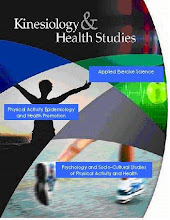
Like most people, I have been aware of the problems associated with reduced blood flow to the heart for quite some time (angina, heart attacks, etc). However, I recently became aware of a related condition known as peripheral artery disease (PAD) when it was diagnosed in a friend of my family. PAD refers to the obstruction of arteries in the arms and legs, and can result in reduced blood flow to muscles below the obstruction. As well as being a risk factor for heart disease, the reduced blood flow associated with PAD can cause significant amounts of pain in the legs when walking even short distances, and can be very debilitating. Not surprisingly given the increased prevalence of risk factors including obesity and diabetes in recent years, the prevalence of PAD is also increasing.Given the serious impact that PAD has had on my friend's mobility, I was pleased when I came across an article examining the positive influence of exercise on PAD in the latest issue of the Journal of Physiology. Taylor and colleagues blocked the femoral artery in rats, then examined blood flow to muscles below the blockage after three weeks of exercise 'training' or a 3 weeks of being confined to their cage. Both groups developed 'collateral' blood vessels to re-route blood around the obstruction, which is pretty cool in and of itself. However, the exercise training group developed larger collateral vessels than the sedentary group, resulting in significantly increased blood flow to muscles below the obstruction in the exercise training group. Although the rats can't verbalize how they feel, I would expect that with increased blood flow the rats in the exercise group would also feel less pain in their legs than those in the sedentary condition.I was most excited to see this study because among other things, my acquaintance has begun a daily walking program and their symptoms have improved considerably since their training began. Exercise is not the only answer for problems like PAD, but it's nice to see that something as simple as a walking program can be part of the solution.


No comments:
Post a Comment